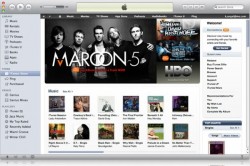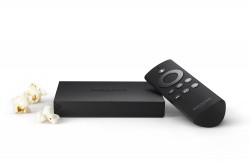Weekly News Roundup (1 February 2015)
It’s been one hell of a week here in Australia. Two weeks ago, we had almost no streaming video-on-demand services, and now we have two, with Netflix on its way too. Australia may now have the most competitive SVOD markets anywhere in the world, and Netflix’s success here may no longer be guaranteed.
We’ll have more on this later in the WNR, for now, let’s start with the copyright related news stories.
![]()

Digital music sales have fundamentally changed how music is sold, from the days of (much more profitable) CD albums
Another nail into the coffin for the notion that piracy reduction leads to increased revenue, based on the far too simplified idea that every pirated copy is a lost sale. Despite a dramatic decrease in the music piracy rate in Norway, revenue for the industry has barely changed, and in real money terms, may have decreased since the heady days of piracy.
Whereas in 2009, 80% said they downloaded pirated music, now, only 4% admit to doing so. And despite the country’s tougher copyright laws, it was refreshing to hear from the country’s anti-piracy lobby that new legal services, and not legislation, has been largely responsible for this change in behaviour. But despite music piracy having been practically defeated, music industry revenue in Norway remains flat.
The explanation is simply. The fall in music revenue has little to do with piracy, and much more to do with the transition from physical media, CDs, to digital. Highly profitable CD album sales gave way to cheaper digital track sales, and revenue has been going downwards ever since (which is common sense, since there is quite a difference in earnings between paying $12 for an album of 12 songs for only one song that you actually want versus paying $1.29 for the same song as a download). The fact that piracy, itself a by-product (or side effect) of the digital transition, rose during the same time period only suggests correlation, not causation.
Now, some of this lost revenue is being clawed back by revenue from streaming. It’s not going to replace what was lost by CD album sales, which seems to be the chief complaint of the music industry these days. They’re just going to have to get used to the new normal, because purchasing habits have dramatically changed and no amount of blaming piracy is going to change it back.
![]()
For video streaming, things are changing too. Instead of relying on the (often limited and frustrating to use) streaming capabilities of other CE devices (such as Blu-ray players, smart TVs and game consoels) to watch streaming content on their TVs, more and more are using dedicated media streamers such as Apple TVs, Rokus, Chromecasts and Fire TV Sticks. And even more, 40% of households, will be using them by 2017, says NPD.

Devices like the Amazon Fire TV are taking over from Blu-ray players and game consoles for TV streaming
It goes the other way too. Streaming services need to realise that user experience is sometimes just as important as the content. Taking a look at Australia, where the streaming scene has exploded in the last week with the launch of not one but two new streaming services (and this is before Netflix even arrives, in March). Both new services, Presto and Stan, have decided to go down the Android, iOS and Chromecast route (Stan additionally also supports Apple TV). Devices like the Chromecast now represents the quickest way to get video streaming apps on TVs, even TVs without Internet connectivity, and it’s also easier for developers than having to work with Microsoft or Sony, or who knows how many other smart TV makers, to get apps onto these closed platforms. Netflix, with their experience and expertise, will be able to launch in Australia with greater hardware support, and that will give them a big advantage.
Microsoft does have an advantage here, with Windows 10 apps likely to work across a range of Windows and Xbox devices, making it easier for developers (and increasing the incentive) to make apps for that platform. Sony, on the other hand, will have to hope that the PS3/PS4’s popularity is incentive enough for video app developers to take on the platform (time will tell if Presto and Stan get PS3/PS4 apps). That leaves the smart TV makers, all of whom have their own closed platforms that developers will have to take a lot of time to learn and develop for. What smart TV manufacturers need is a common app OS, and Android TV may be the answer.
Apps and OS’s aside, what has made things easier recently has been the increasing support for HTML5, which allows websites and apps to share common code, and for an easy way to streaming video. YouTube’s decision this week to default to HTML5 for its videos, for Chrome, IE 11, Safari 8 and Firefox beta users, is the best indication yet that this is the direction all web/app developers will be heading towards. It’s bad news for Flash though, and I think even Adobe realises that its time has come and gone.
——
That’s the way. See how every story this week seems to have segued nicely from one to the other? I love it when this happens, even if sometimes I have to take force the issue somewhat. See you next week.
